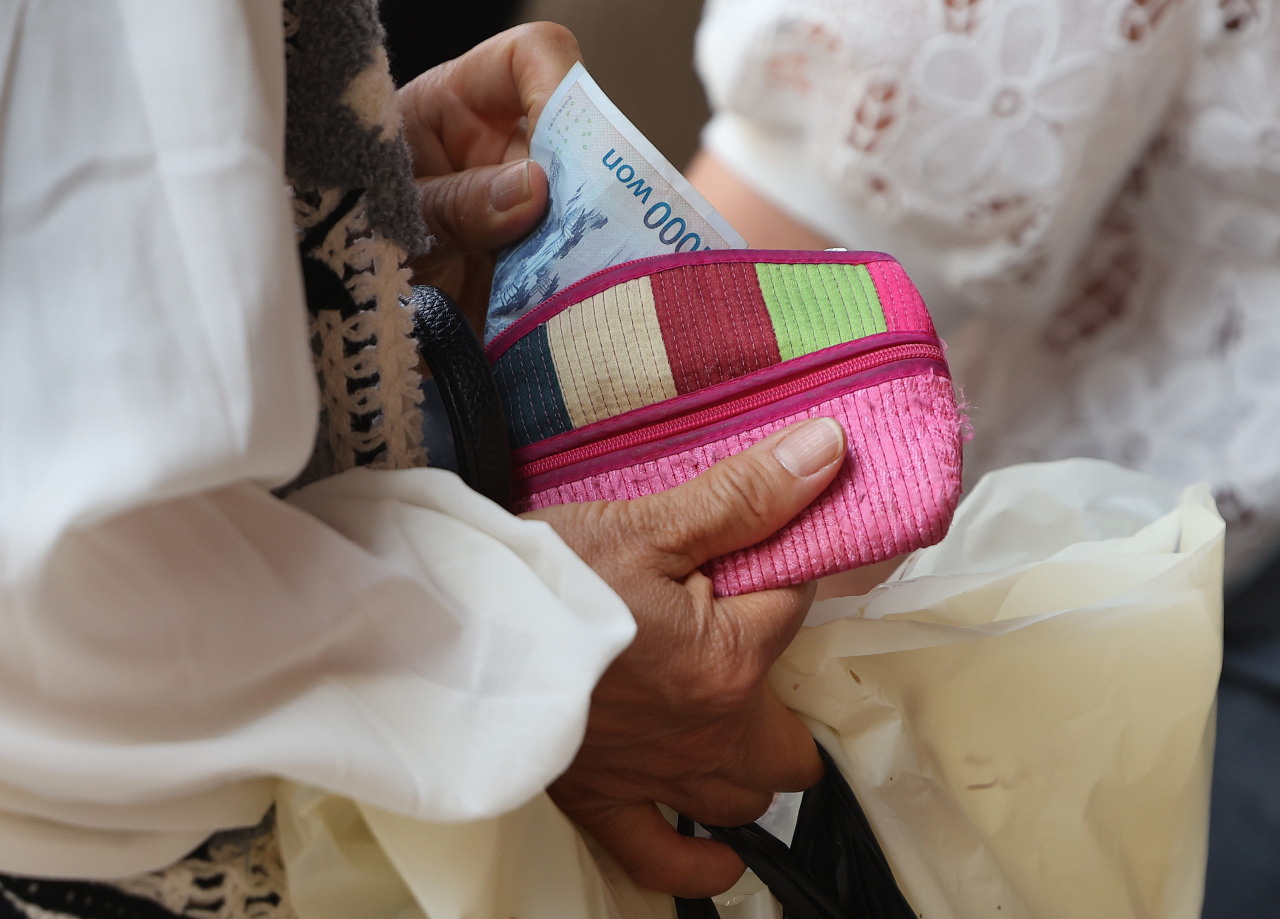
SEJONG -- Korea’s inflation surpassed 5 percent on-year last month in the wake of an ongoing glitch in global supply and rapid growth in domestic demand amid normalization from the pandemic, state data showed Friday.
According to Statistics Korea, consumer prices climbed 5.4 percent in May compared to a year earlier. This posted the highest figure in more than 13 years, dating to August 2008, when 5.6 percent growth in prices was reported.
This also marked the first time that on-year inflation marked above 5 percent since it reached 5.1 percent in September 2008.
After touching 2.3 percent in June 2021 on-year, consumer prices growth showed a fast bounce back to reach 3.2 percent in October 2021, 3.7 percent in February 2022, 4.1 percent in March and 4.8 percent in April.
The spiraling inflation comes despite the Bank of Korea monetary policy board’s continuous hikes in the base interest rate. During the June 2021-May 2022 period, the base rate rose by 125 basis points from 0.5 percent to 1.75 percent per annum.
In May, diesel and gasoline prices led inflation with on-year growth of 45.8 percent and 27 percent, respectively. The price of liquefied petroleum gas rose 26 percent.
Russia’s invasion of Ukraine, now in its fourth month, has led international crude prices to continue to hover over $100 per barrel, constituting one of the main downside risks for the Korean economy.
Prices of agricultural and livestock products also greatly contributed to pushing inflation above 5 percent, adding to the cost burden on households.
A 32.1 percent surge was seen in the price of potatoes, 27.9 percent in imported beef, 27 percent in grapes, 24 percent in cabbage, 20.7 percent in imported pork and 16.1 percent in chicken.
In addition, international airfares rose by 19.5 percent, insurance premiums by 14.8 percent, electricity prices climbed 11 percent and gas prices by 11 percent.
Among the 17 major cities and provinces of South Korea, Gangwon Province topped the list with 6.7 percent inflation, followed by North Gyeongsang Province with 6.4 percent and Jeju Province at 6.3 percent. Following them were South Jeolla Province with 6.2 percent and both South Chungcheong and North Chungcheong provinces at 6 percent.
Seoul recorded the lowest figure at 4.5 percent growth. Gyeonggi Province and Sejong saw consumer prices rise by 5.4 percent and 5.8 percent, respectively.
A senior Statistics Korea official said “there is a high possibility that the (consumer prices) growth will maintain the 5 percent range in June.” He predicted yearly inflation for 2022 to record 4.3 percent under the assumption that inflation maintains the current level.
By Kim Yon-se (kys@heraldcorp.com)
According to Statistics Korea, consumer prices climbed 5.4 percent in May compared to a year earlier. This posted the highest figure in more than 13 years, dating to August 2008, when 5.6 percent growth in prices was reported.
This also marked the first time that on-year inflation marked above 5 percent since it reached 5.1 percent in September 2008.
After touching 2.3 percent in June 2021 on-year, consumer prices growth showed a fast bounce back to reach 3.2 percent in October 2021, 3.7 percent in February 2022, 4.1 percent in March and 4.8 percent in April.
The spiraling inflation comes despite the Bank of Korea monetary policy board’s continuous hikes in the base interest rate. During the June 2021-May 2022 period, the base rate rose by 125 basis points from 0.5 percent to 1.75 percent per annum.
In May, diesel and gasoline prices led inflation with on-year growth of 45.8 percent and 27 percent, respectively. The price of liquefied petroleum gas rose 26 percent.
Russia’s invasion of Ukraine, now in its fourth month, has led international crude prices to continue to hover over $100 per barrel, constituting one of the main downside risks for the Korean economy.
Prices of agricultural and livestock products also greatly contributed to pushing inflation above 5 percent, adding to the cost burden on households.
A 32.1 percent surge was seen in the price of potatoes, 27.9 percent in imported beef, 27 percent in grapes, 24 percent in cabbage, 20.7 percent in imported pork and 16.1 percent in chicken.
In addition, international airfares rose by 19.5 percent, insurance premiums by 14.8 percent, electricity prices climbed 11 percent and gas prices by 11 percent.
Among the 17 major cities and provinces of South Korea, Gangwon Province topped the list with 6.7 percent inflation, followed by North Gyeongsang Province with 6.4 percent and Jeju Province at 6.3 percent. Following them were South Jeolla Province with 6.2 percent and both South Chungcheong and North Chungcheong provinces at 6 percent.
Seoul recorded the lowest figure at 4.5 percent growth. Gyeonggi Province and Sejong saw consumer prices rise by 5.4 percent and 5.8 percent, respectively.
A senior Statistics Korea official said “there is a high possibility that the (consumer prices) growth will maintain the 5 percent range in June.” He predicted yearly inflation for 2022 to record 4.3 percent under the assumption that inflation maintains the current level.
By Kim Yon-se (kys@heraldcorp.com)







![[KH Explains] Hyundai's full hybrid edge to pay off amid slow transition to pure EVs](http://res.heraldm.com/phpwas/restmb_idxmake.php?idx=644&simg=/content/image/2024/04/18/20240418050645_0.jpg&u=20240419100350)






![[From the Scene] Monks, Buddhists hail return of remains of Buddhas](http://res.heraldm.com/phpwas/restmb_idxmake.php?idx=652&simg=/content/image/2024/04/19/20240419050617_0.jpg&u=20240419175937)

![[KH Explains] Hyundai's full hybrid edge to pay off amid slow transition to pure EVs](http://res.heraldm.com/phpwas/restmb_idxmake.php?idx=652&simg=/content/image/2024/04/18/20240418050645_0.jpg&u=20240419100350)

![[Today’s K-pop] Illit drops debut single remix](http://res.heraldm.com/phpwas/restmb_idxmake.php?idx=642&simg=/content/image/2024/04/19/20240419050612_0.jpg&u=)